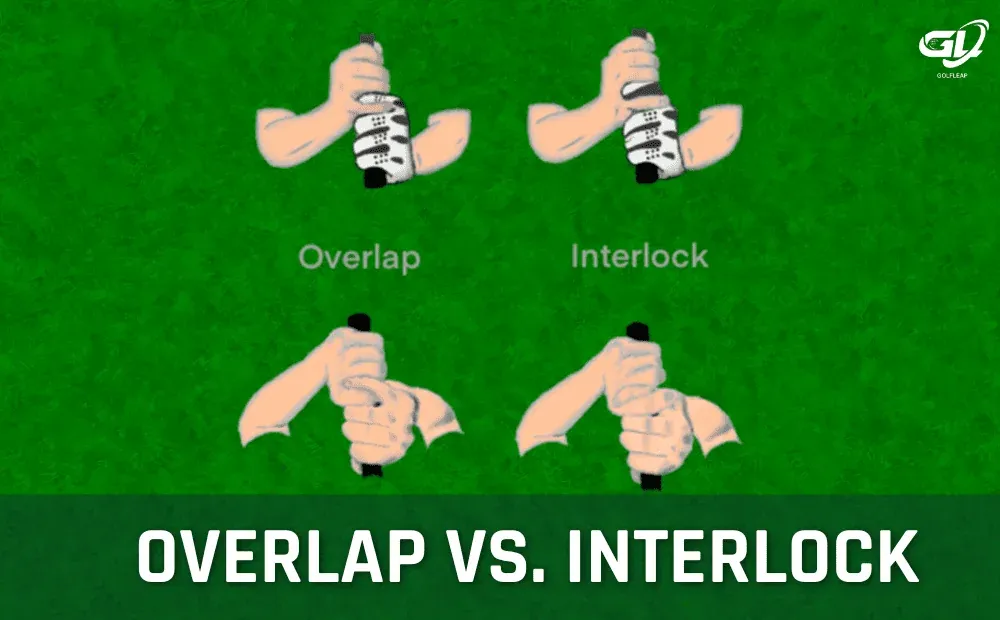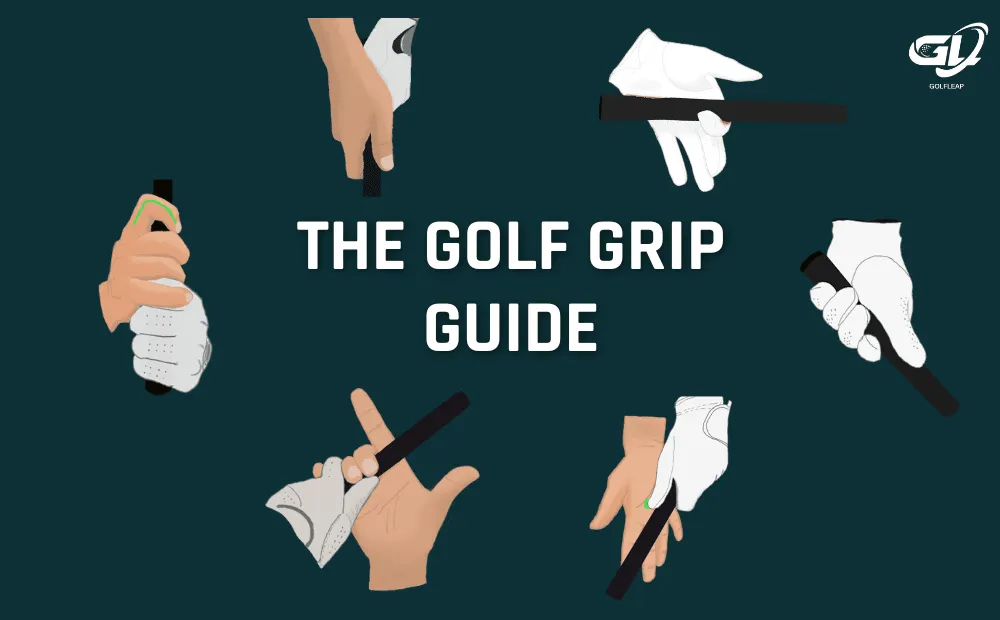
Learning how to grip a golf club plays a significant role in how well you swing the golf club. It may sound simple and something that’s self-intuitive, but grip styles may vary depending on the golfer and it’s important you use the right hold for each type of club in your bag.
In this guide, we will break down every detail to holding the golf club. Each section below contains its own set of instructions, so we encourage you to read deeper into each part to make sure you are getting every checkpoint to the grip correct. An excellent approach is to practice with a golf club in your hand to follow along with the illustrations and step-by-step guide. After mastering the grip, move on to the correct setup.
Step 1: Left-Hand Golf Grip Placement
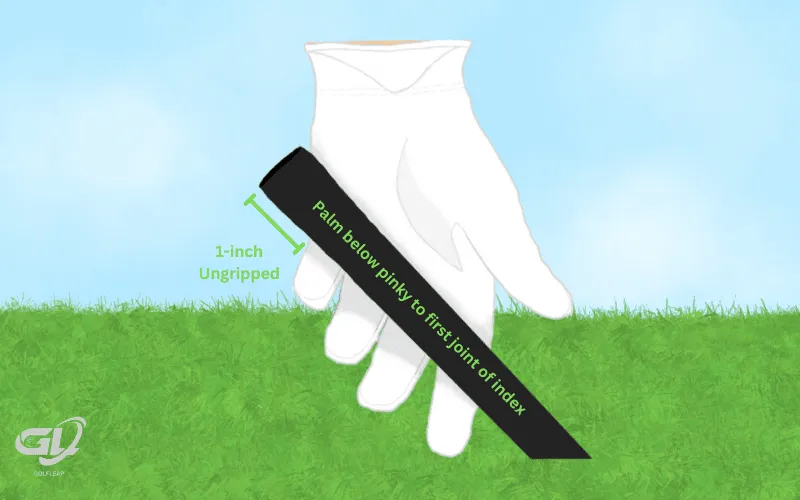
Your left hand is basically the foundation of your golf grip, and it has a big say in how well you control the club face and how smooth your swing is.
To grip properly with your left hand, let the club rest 45 degrees from the ground, where the butt of the grip points towards your stomach and the grip rests diagonally past the first joint of your index finger to the fleshy part of the palm below your pinky. Do this while leaving an inch ungripped at the end. From there, close your palm while resting your thumb on top of the grip, pointing towards the club head.
Detailed Guide Here: How to Hold the Golf Club With Your Left Hand
Step 2: Choose The Most Comfortable Grip Orientation
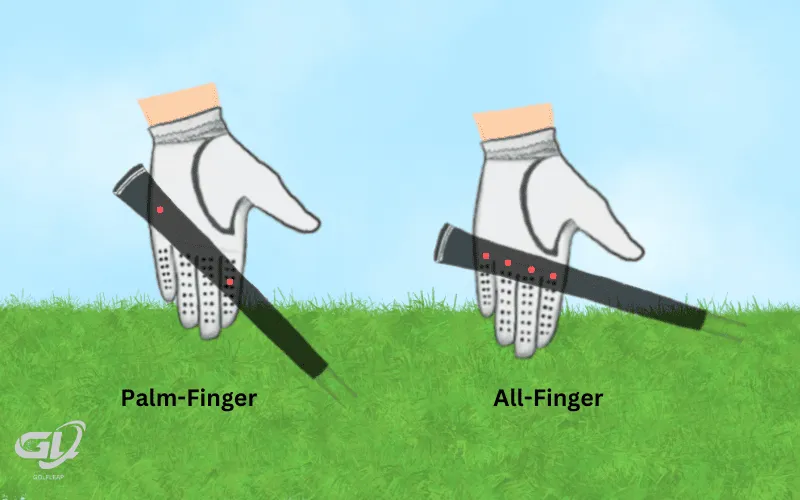
Most golf coaches teach the Palm-Finger Grip which is what we showed you above and happens to also be the most popular grip among golfers. This grip has the golf grip positioned diagonally across your left-hand and the grip pressed against both your fingers and the palm. For most, this is the most comfortable grip to start with and is the grip we’re showing you here.
However, that All-Finger grip is also a viable option where the golf grip is wrapped by the palm-side of the knuckle joints of your left-hand. This grip should only be used if you play with a long-left thumb, else go with the Palm-Finger Golf Grip.
Detailed Guide Here: Palm-Finger Grip vs an All-Finger Grip
Step 3: Right Hand Golf Grip placement
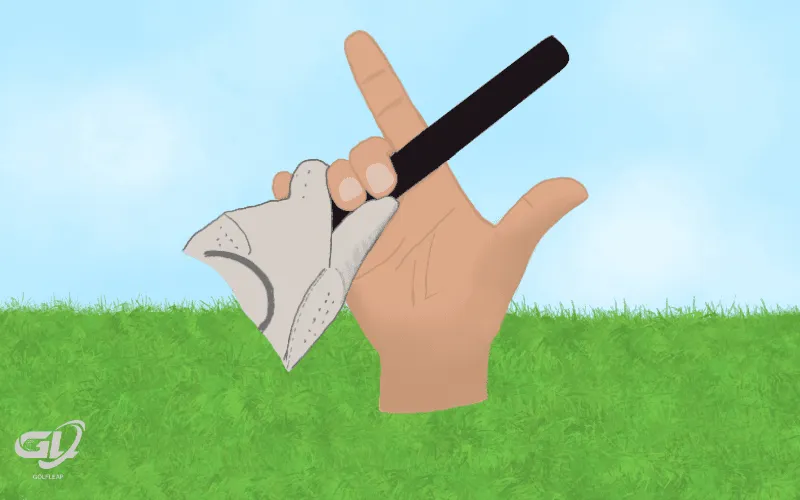
The right hand plays a big role in controlling the club’s face through impact and is what translates the feel of the golf club to golfers.
To start, meet the center of your right palm to the edge of the left thumb. From there, wrap your index middle and ring finger around the grip. This creates a finger gun with the golf grip firmly held by your palm, ring, and middle finger. Finally, pinch the lower end of the grip between the thumb and the first joint of the trigger finger of your right-hand. To do this, wrap the trigger finger around and curving inward at the lower end of the grip.
Detailed Guide Here: How to Hold the Golf Club With Your Right Hand
Step 4: Positioning the Pinky Correctly

Now, let’s touch on what to do with your pinky with the golf grip. How you place your right pinky on the grip depends on your preference between an interlocking or overlapping golf grip. To cover it briefly:
- The interlock grip has the right pinky wedged/ crossed with the index finger of your left hand.
- The overlap grip has the right pinky resting on top of the first finger joint of both the index and middle finger.
Detailed Guide Here: Interlock VS. Overlap Grip
Step 5: Understanding the Different Types of Golf Grips
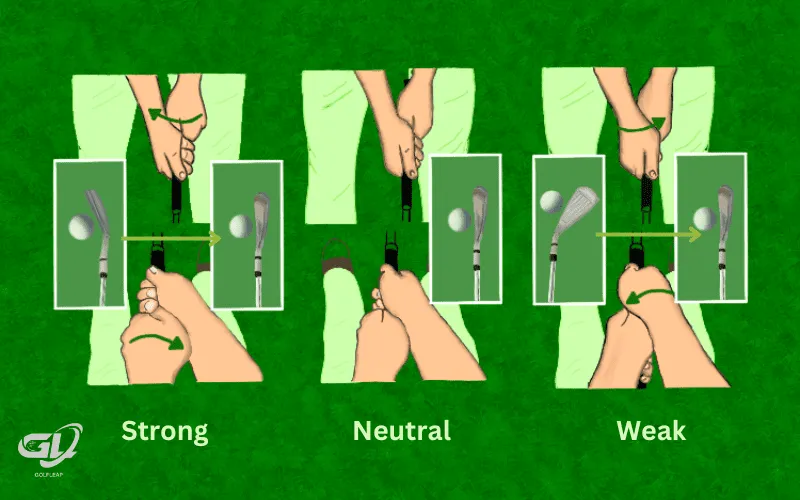
Beginners should start with a neutral golf grip, this is where both backhands point opposite of one another with the left backhand facing the target.
Generally speaking, if you’re a slicer, a strong grip is what you’d go with while a weak grip is often used for those who hook their golf shots. Additionally, if slicing is not an issue but your dominant hand seems to close the club face, then a weaker grip is your best bet.
- For a stronger grip, rotate your hold anti-clockwise from neutral with the face of the golf club still square of the target.
- For a weak grip, do the opposite, where you rotate both hands clockwise from the neutral grip while the club face remains square with the golf ball.
Detailed Guide Here: Strong, Weak, or Neutral Grip
Step 6: Applying the Right Amount of Grip Pressure
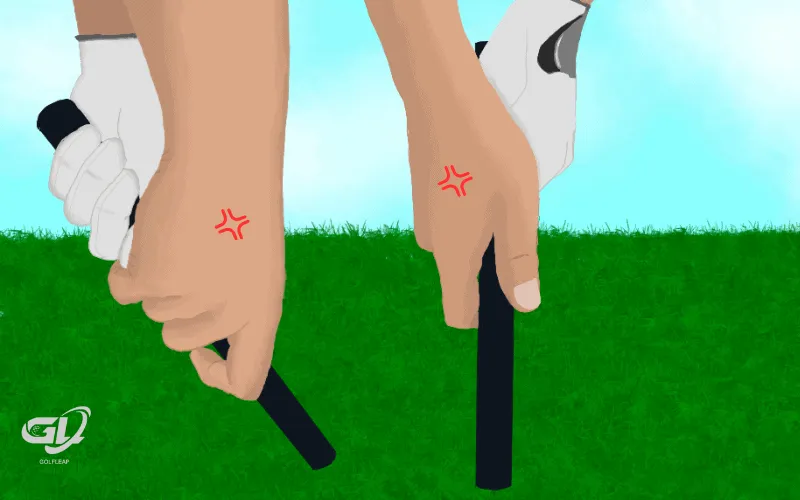
Many beginners make their first mistake when they clamp down on the golf club with 100% force, this will lead to injuries and an over dominance right hand. The grip pressure dictates the smoothness of your golf swing. Furthermore, establishing the right amount of pressure is just as important as how you hold the golf club.
To apply the right amount of pressure, imagine squeezing a soaked towel just to the point when water is about to drip.
Detailed Guide Here: Golf Grip Pressure
Other Golf Grip Guides and Resources
The Driver Grip
How you hold the driver should be similar to how you hold any other golf club. The catch is to go with a stronger grip with the driver to remove any chance for the club face to open up on impact. Detailed Guide Here: The Driver Grip
The Putting Grip
How you grip the putter is completely different from how you would grip your irons or woods. Putter grips come in different shapes, lengths, and sizes, welcoming a larger range of gripping styles. In other words, gripping the putter like you would with your irons just won’t cut it. Detailed Guide Here: The Putting Grip
Choosing the Correct Grip Size For Your Grip
Going with a grip that’s too small for your hands or too large for your hands introduces a set of problems. Generally speaking, if a grip is too small, you’ll notice the grip twisting in your palm as you make contact with the golf ball which often leads to blisters and poor face control. Grips that are too big will result in poor wrist control and reduce the power of your golf swing. Detailed Guide Here: Choosing the Correct Grip Size For Your Grip
Related Posts >>
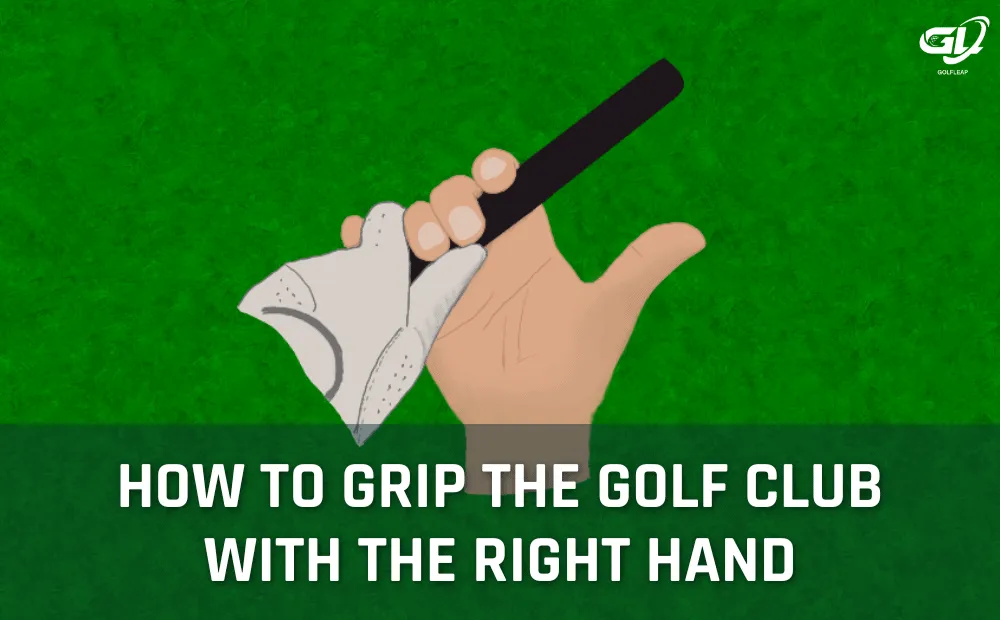
How to Grip the Golf Club With the Right Hand

How to Apply The Correct Golf Grip Pressure
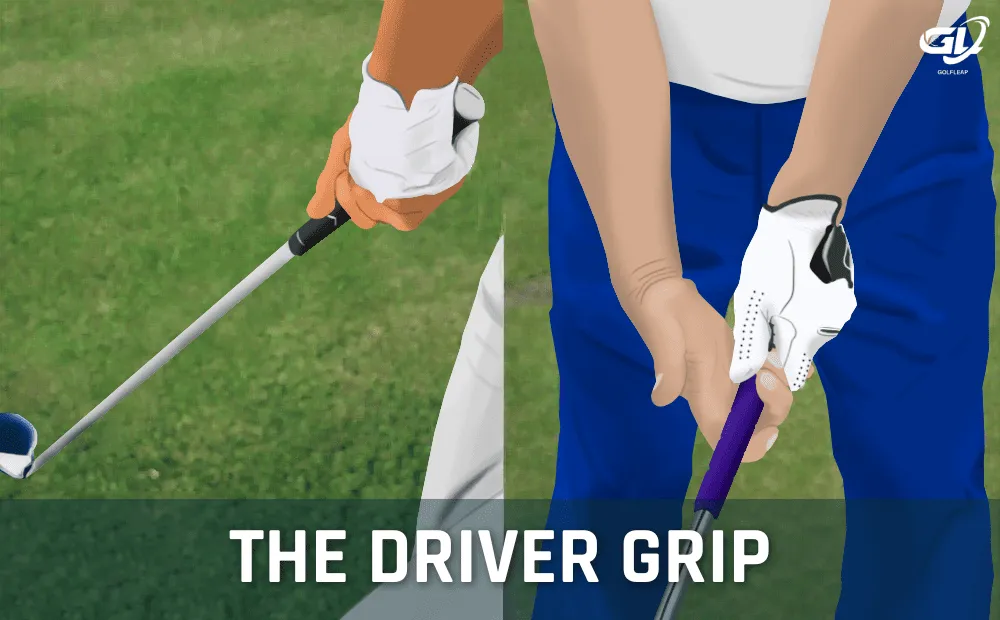
How to Grip a Golf Driver Correctly
